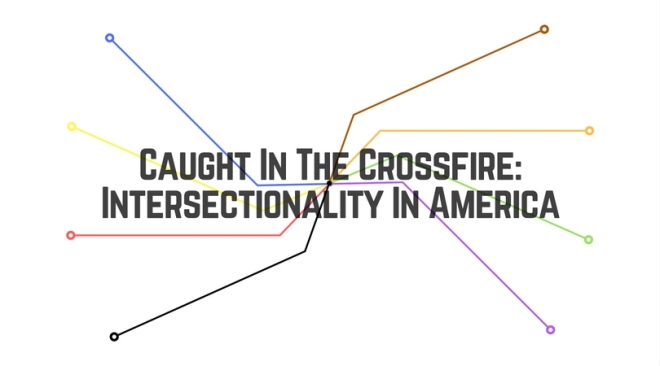
By Matt Reichenbach
Darius Moore logged onto Grindr, a popular social media site for gay men, looking for companionship. An alumnus from Elon University living in Harlem, New York, Moore looked forward to enjoying the post-graduate lifestyle back in his hometown — a place near and dear to his heart. He scrolled past a couple messages but one caught his eye, “Hey ni****.” He opened the message to find two inappropriate images followed by another message, “I love men with dark features.”
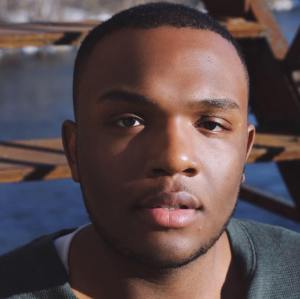
“That type of blatant racism never happened to me on an app but I was not surprised,” Moore said.
Intersectionality, defined as “the complex, cumulative manner in which the effects of different forms of discrimination combine, overlap, or intersect.”, is a term many are unfamiliar with. People often use identity to synthesize connections with others and exist in social groupings. However, in the cases that people may fit in multiple identity groups, identity becomes complicated. For many black, gay men, their identity often rests at an impasse — they fit neither in the black community nor the LGBTQIA community. There are neither one nor the other; they are both.
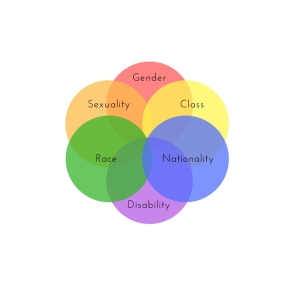
A History of Feeling Torn
Throughout U.S. history, black and LGBTQIA communities have been marginalized and explicitly targeted by majority groups. For black Americans, instances of racism continue to echo throughout the country as symbols of the former South stir up controversy and relationships between black communities and the police unearth strong racial tensions. For LGBTQIA Americans, instances of transphobia and homophobia plague communities and suggest that sexuality and gender identities are those that carry no significance and do not have a place in this country.
It’s here where intersectionality exists.
In most cases, those who find themselves as part of various minority groups feel greatly disadvantaged and alone compared with those who belong to only one.
Detric Robinson, community director for the Danieley Neighborhood at Elon University, points out that from his own experience, queer people of color tend to focus on one aspect of their identity, essentially separating their identities and ruining what it means to be both.
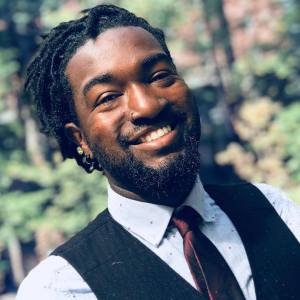
“My partner and I identify as gay black men, but in college we explored our black identity and our gay identity at different points; I focused on my gay identity early on, while my partner focused on his black identity,” he said. “This comes back to us seeing those as two separate experiences during our times in early college, but now we recognize that we can’t separate the experiences of the two identities.”
Ann Cahill, professor of philosophy, argues that intersectionality creates problems around how others perceive those who exist in multiple minority groups.
“Our conceptual frameworks create the problems with assumptions built into them,” she said. “It makes certain identities less than welcome, less than represented. They often feel like they have to correct the record.”
These conceptual frameworks are the root of many problems that intersectionality creates for queer people of color — instances of ignorance, intolerance and above all, sexual racism.
What It Means To Want
Attraction. Preference. Taste. Human beings undeniably have sexual desires. One might prefer bigger versus smaller. Another might prefer taller rather than shorter. However, one might prefer lighter versus darker.
Many argue that attraction is objective; people like what people like and there’s no rhyme or reason as to why. However, Cahill argues the opposite.
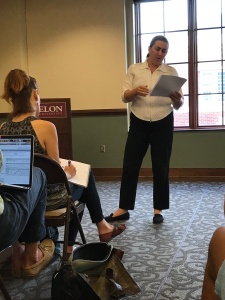
“It’s a conceptual confusion if those preferences exist separately from systems of autonomy,” she said. “Your thing is not just your thing, it’s located in a social and political context; you have some responsibility for it.”
In her article, “Sexual Desire, Inequality, and the Possibility of Transformation,” Cahill argues that sexuality and preference cannot be reduced to a choice of this or that.
“Instead, as is the case with virtually and perhaps all elements of subjectivity, sexual desires, orientation, and identity emerge from a rich and dynamic intersection of materiality, social norms, historical location, and even choice,” she writes.
Sexual desires are influenced and marked by a variety of things. In most cases, sexual arousal is biological and deeply cultural at the same time — most notably illustrated by the nature of foot binding in China.
While people may argue that having a preference for a certain race is not an example of racism, it is inherently racist in preferring the race of one over the race of another.
For Tres McMichael, junior at Elon University, his own experiences have shaped how he sees preference.

“When you start to talk to people about their preferences they get really attacked,” McMichael said. “Your attraction is centered around race, something that isn’t changeable. You are not attracted to a major part of my identity; and that in and of itself is racism.”
According to McMichael, preference is largely developed as a result of comfort in the familiar. In his eyes, this is the reason why white, gay men find it difficult to talk to and date black, gay men.
“If you’re a white gay male who lived in an all white community you don’t know what it’s like to have a black gay male come into that community,” he said. “It’s hard to change because if people are so focused on their attraction, they won’t be willing to reach out to those who are different.”
Robinson adds that preference for whiter skin tones is shown at young ages.
“I think about how darker tones are almost always depicted and paired with ugly, bad, or evil; whereas, lighter tones are usually paired with attractive, good, or innocent,” he said. “This is so prevalent and happens so early in life that small children, given no context, will associate darker color dolls with being ‘bad’ and lighter color dolls as being ‘good’.”
Sexual preference is also noted to develop as a result of historical influence.
“Black men have been demonized as hypersexual and aggressive because white men wanted to protect white women from engaging in interracial relationships while black women were raped by white men for the exact same reason,” Moore said. “It exists because the European standard of beauty has completely erased the identity of people of color, especially black women.”
Jabril Rice, junior at the University of North Carolina at Chapel Hill, adds that historical influence has been magnified due to the inherent bias of the media.
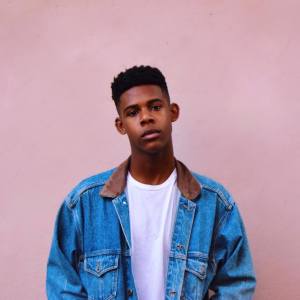
“Black people specifically have a lot of sexual stereotypes that developed as a result of minstrel shows in the late 1800s and early 1900s that have stuck around,” he said. “Sexual racism can also be attributed to the very white-oriented beauty standards that have been emphasized for decades through media.”
These stereotypes have sent shockwaves of misunderstanding and ignorance across many facets of the gay community and have inherently affected how queer people of color are seen by others.
The Sexology of a White, Gay Man and The Psychology of “The Other”
Nothing illustrates sexual desires more than dating apps. Relatively private and remotely used, dating apps contain a slew of demographical information that reveals who people are and what people want.
Studies at various dating app companies reveal that white, gay male preferences are inherently skewed based on skin color.
At OkCupid, reply rates were measured between gay males of different races. Two important conclusions were generated. One, black gay men receive fewer responses than any other demographic — about 20 percent less than non-blacks. And two, white gay men respond the least to non-white men; they respond 15 percent less often and show a marked preference for other whites.
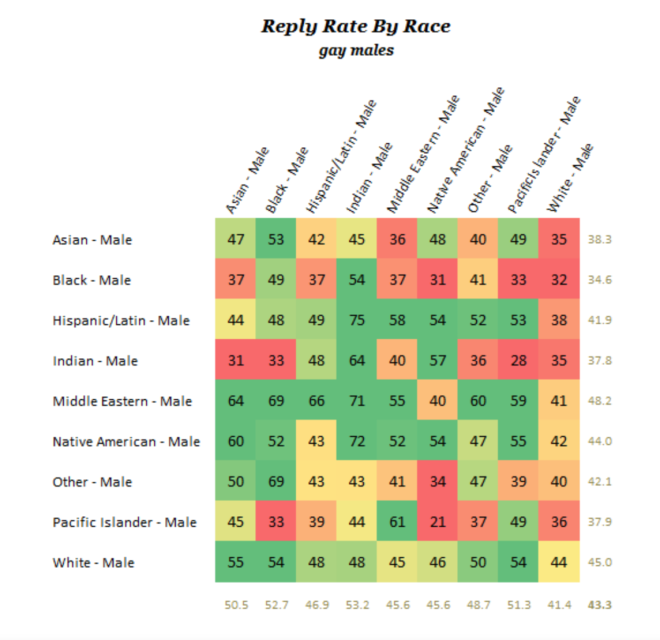
In the chances where white gay men do message black gay men, there are instances of fetishization.
“I am rarely approached by men without an assumption that I have a large penis or that I am a sexually aggressive ‘top’,” Moore said.
Rice also described his experience with being fetishized.
“I will periodically receive a message fetishizing my identity,” Rice said. “Or I’ll be the target of a micro-aggressive phrase like ‘I’ve never been with a black guy before’.”
However, neither fetishization nor sexual racism can be confined to black, gay men.
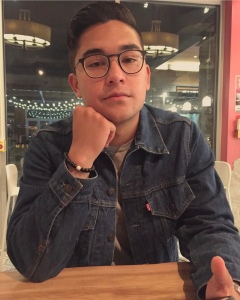
For Chris Stolze, sophomore at George Mason University in Northern Virginia, the effects of sexual racism can still be felt as a member of the Asian-American community.
“I am half German and half Filipino, however all guys only see the Asian half,” Stolze said. “Since I am not a fit, white, gay male I am immediately put behind thousands of gay men just because of my skin color.”
Matthew Antonio Bosch, director of the Gender and LGBTQIA Center at Elon University, recounts his own struggles with being fetishized.
“When people find out I’m Latino, their demeanor changes towards me,” Bosche said. “Some even use food terms to describe latino gay men, making references towards beans and rice, burritos, being a spicy lover — a papí.”
In being fetishized, queer people of color are inherently reduced to their skin color or the connotations that others have of people with darker skin.
This reduction can have many effects on a queer person of color’s psyche.
“Being a black gay man involves so much insecurity and anxiety because of social conceptions of what these three identities mean. Black gay men are often vilified and disregarded in the wider community but also specifically in the queer community and black community.” – Jabril Rice, junior at The University of North Carolina at Chapel Hill.
For others, the problems encountered on dating apps are just the tip of the iceberg on a larger psychological issue of feeling isolated and different.
“Being a gay, black man means that I have to accept a lot of trauma,” Moore said. “A lot of trauma from family and friends. A lot of trauma from partners. A lot of trauma from institutions.
“It means that when I walk into a popular gay bar in West Hollywood or Hell’s Kitchen, I will not see more than ten black men in a room of 200 white men.
“It means that I won’t be approached by anyone in that space.
“It means that my white friend will always receive messages from men with zero expectations of him while I will receive a message once every three weeks from an older man who ‘loves dark features and aggressive men’.
“It means that I will never have a place in the community.”
While many in the community feel disillusioned in their own identities as being black and gay, others feel proud and confident in being different.
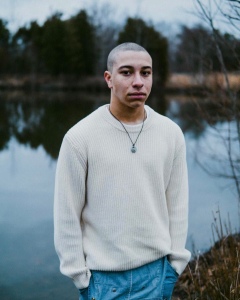
To Julian Rigsby, junior at Elon University, the issue of being black and gay rarely crosses his mind.
“I don’t think about it that often,” he said. “I only think about it when a negative thing happens to me. It isn’t something I actively think about — only when something collides with who I am.”
To Stolze, he feels quite empowered.
“I feel powerful to be a queer person of color,” he said. “I am confident in myself and in the things that I do. I do not believe that my skin tone sets me back farther than anyone else. Everyone has obstacles to get over in their life – all of them seeing past skin color.”
However, in many cases, being different often leads to larger problems.
For McMichael, he feels isolated in being different.
“People won’t reach out to me or go on dates with me; I think that’s part of the thing that makes me feel not welcome at Elon,” he said. “Gay men don’t know the implications that has with my feelings.”
Despite the fact that the majority of queer people of color feel inhibited in feeling different, the culture of the LGBTQIA community regarding virtual communication puts people of color in a perpetual state of mental subjugation in how they navigate romantic and sexual relationships.
Behind the Virtual Wall
Darius Moore was fed up with dating apps. He was fed up with being exploited as a fetish. He was fed up with dealing with racial slurs. And above all, he was fed up with the fact that as a result of his race, he would never have a normal experience on a dating app.
As a result, he decided to conduct an experiment on Fire Island, a popular vacation destination for gay New Yorkers.
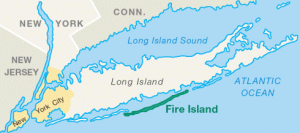
Moore, along with one of his white, gay friends, logged onto Grindr at the same time upon arrival.
“After being on the island for three hours, I hadn’t received a single message, even after messaging a few guys — that did not surprise me,” Moore said. “Then I decided to switch my profile photo to a photo of my white friend so that we could compare our response rates. Same bio. Same basic stats. Within 30 minutes of switching the photo, he received seven messages.”
A poll conducted by Travel Gay Asia and Gay Star News, two globally renowned gay online publications, concluded that 48 percent of gay men find companionship on gay dating apps.
More than any other demographic, gay men use dating apps to find love, sex or even friendship.
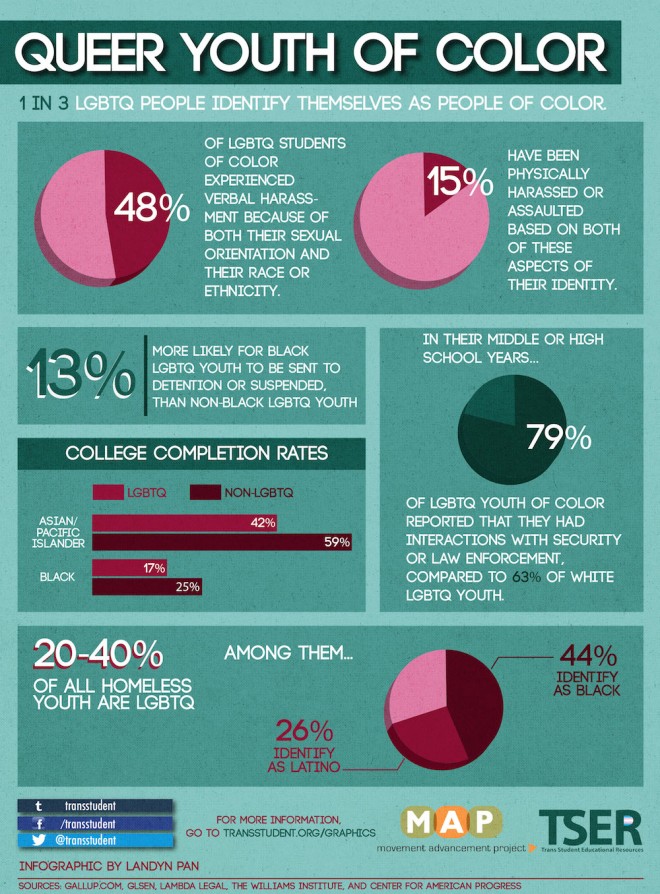
However, the culture of gay dating apps reveals a sexually racist climate that pushes queer people of color into a cycle of being blocked, ignored and outraged against.
The issue is more prevalent than what some might think.
According to a Gallup poll, 48 percent of LGBTQIA students of color experience verbal harassment because of both their sexual orientation and their race or ethnicity.
This statistic is even more jarring when taking into account the fact that one in three LGBTQIA people identity themselves as people of color.
Regardless of the virtual medium to which queer people of color resort to in finding companionship, many have felt disadvantaged as a result of their race.
“On Tinder, I get ghosted a lot. I’ll describe my family — both of my parents are black — and I’ll get ignored. It makes me narrow what I’m looking for when people are discriminating against me because of my background.” – Julian Rigsby, junior at Elon University.
“This one time I was taken aback by a comment made by another gay man in my area, who told me to, ‘Block me, Asian.’,” Stolze said. “However, when I said I was mixed he changed his mind — being mixed race is okay, but being Asian is not.”
For McMichael, dating apps cause problems both on and off the screen.
“There are people on these apps that will literally put up ‘no blacks’,” he said. “People have no shame saying that when going after a sexual experience but in the real world, no one would say they wouldn’t have a conversation with a black person — but behind the fourth wall, it’s all fair game.”
The point of frustration for McMichael is when he encounters the people he meets on dating apps on campus.
“I walk around campus; I see you. I need to have that conversation with you.” – Tres McMichael, junior at Elon University.
Since sexually racist tendencies are usually confined to dating apps, queer people of color struggle in being able to change mindsets and attitudes related to preference and attraction; they lack windows of opportunities at educating others and fixing the broken record.
However, it does not help that gay media on a national level does little to advocate for their plight.
Whitewashing Gay America
Rukkle.com, one of many LGBT lifestyle websites, featured a list of company compiled gay icons. The list includes musicians like Elton John, actors like Jake Gyllenhaal and athletes like Ben Cohen. However, out of a list of 13 men, only two are men of color.
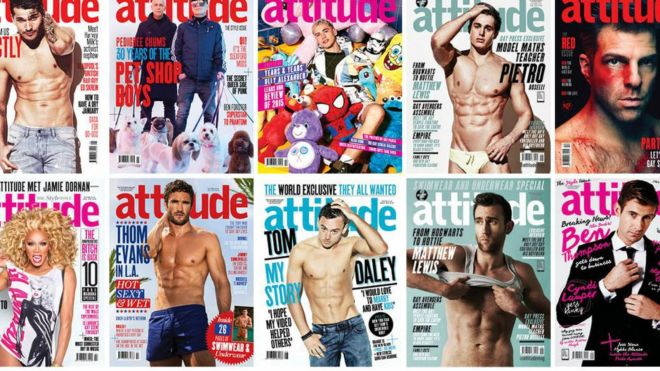
While only illustrated on one website, the issue of whitewashing echoes throughout all platforms of gay media.
Whether it be LGBT news, celebrities or trends, most topics are white based or exclude perspectives from queer people of color.
A couple years ago, the hashtag #GayMediaSoWhite trended on Twitter after queer black rapper Mykki Blanco retweeted Sony music songwriter Jessie Saint John on his opinion regarding the content within gay media.
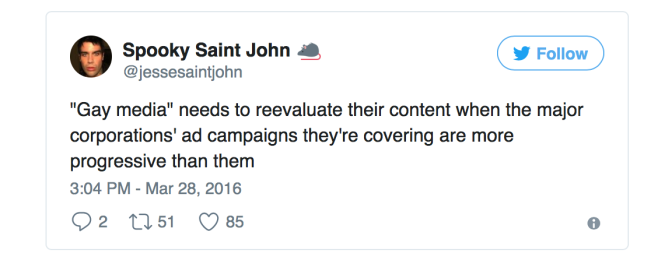
An article on Mic titled “Is the #GayMediaSoWhite? Gay Men of Color Exposed Racism in Gay Media on Twitter,” further dissected the movement.
According to the article, users on social media began to analyze the narratives generated between white, gay men and queer men of color. Men of color were often depicted as either criminals or tragic victims in need of help while white, gay men were idolized based on attractiveness.
“Gay icons are easy to identity with because there’s no political aspect to them. It’s easier to identify with a basic shell before you add color to them.” – Tres McMichael, junior at Elon University.
A glance towards magazine stands reveals much about the whitewashing of gay culture, especially in regards to out gay celebrities, icons and advocates.
Bosch explains why there appears to be a lack of people of color in the media.
“There’s a reality around power, privilege and socioeconomic status favoring white people in a way that advantages them — regardless of identity,” he said. “When people come to the forefront of LGBT identities, a lot of the times the people at the top with money and influence come to mind, which implies the Ellens of the world, the Rosies and the Neil Patrick Harris’; these are the role models people think of in entertainment.”
However, queer people of color are making themselves known in other ways.
According on an article on Vice titled “How Queer People of Color are Combating Sexual Racism,” queer people of color are banding together to form community forums and mental health groups that discuss topics relating to their community. These topics range from internalized racism, separatism and shared experiences between members of queer, black communities.
Most importantly for queer people of color, it is about creating spaces for supportive communication and uplifting those that can serve as role models for how the community should be illustrated to others.
“There’s a piece about creating new histories, new characters and uplifting characters from the past as queer people of color in the media. Thinking about the proximity of characters to the main plot of the story so that queer people of color aren’t used as a comic relief role or a sidekick role but rather integral to the plot.” – Matthew Antonio Bosch, director of the Gender and LGBTQIA Center
For many queer people of color, creating healthy attitudes and mindsets regarding their status as an intersectional community is essential in reversing the script that others have written for them throughout history.
Redefining Pride
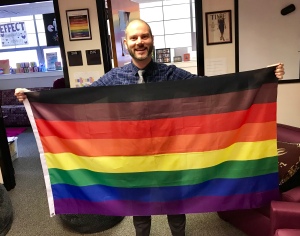
In June 2017, the iconic pride flag underwent a major transformation.
Darryl DePiano, owner of iCandy Philadelphia, a gay bar in downtown Philadelphia, was caught on tape using the n-word toward a patron during Philadelphia’s Pride celebrations.
This was enough for the city to draw its eyes to overcoming racism within the LGBTQIA community.
For Philadelphia Pride, the city added black and brown stripes to the rainbow flag outside of city hall — representing inclusion and diversity within the LGBTQIA community.
However, the reception of the flag was less than pleasant due to outbursts from white, gay males.
Despite the efforts made to advocate for more visibility regarding queer people of color, the amount of backlash indicated that something more must be done.
Many queer people of color point out that there is no easy way at changing how others perceive them; the mindsets towards them from other identity groups are rooted in years of ignorance and misunderstanding.
Despite this, they have hope and an expectation that attitudes can and will change through a variety of ways.
Some think change exists in correcting standards of attraction.
“One thing would be opening up the idea that beauty comes from all bodies,” Bosch said. “If we cut ourselves off from that too early, then we really limit the possibilities for ourselves and instead, perpetuate a narrow definition of beauty and of acceptance.”
Others feel that change exists in correcting the media.
“This deconstruction starts with the racist and homophobic narratives that have been present for quite some time. A lot of the time movies and shows do not show the actual representation of the queer community and this results in white becoming the default identity and standard.” – Jabril Rice, junior at The University of North Carolina at Chapel Hill.
For Darius Moore, he suggests that white, gay men need a reality check.

“Ultimately, white men need to challenge their inherent prejudices,” he said. “Learn the distinction between preference and fetish. Ask yourself why your expectations of black men are so much higher than white men.
“Why do you assume that all Asian men are feminine? Why do you assume that all Latinx men are sensual, incomparable lovers?
“I am not asking anyone to force themselves to speak to a person of color just so that they do not perpetuate a cycle of oppression.
“But I am asking people to have the conversation.”
And for many, this conversation is long overdue.
To get the queer female person of color perspective, click here.